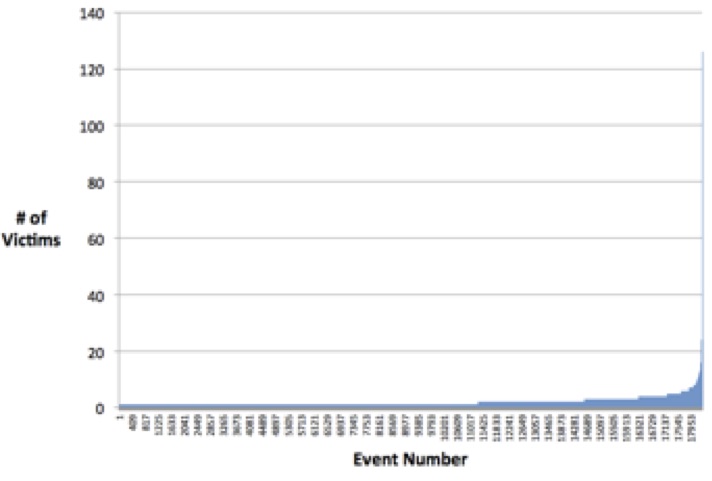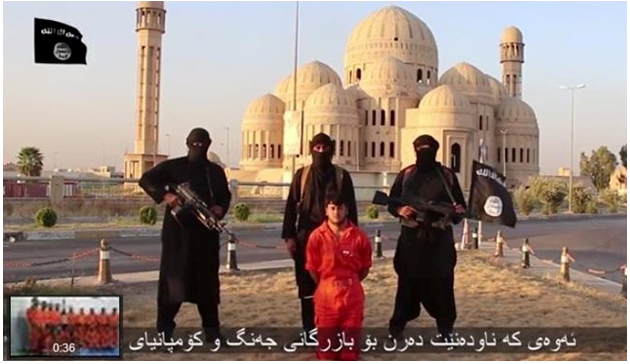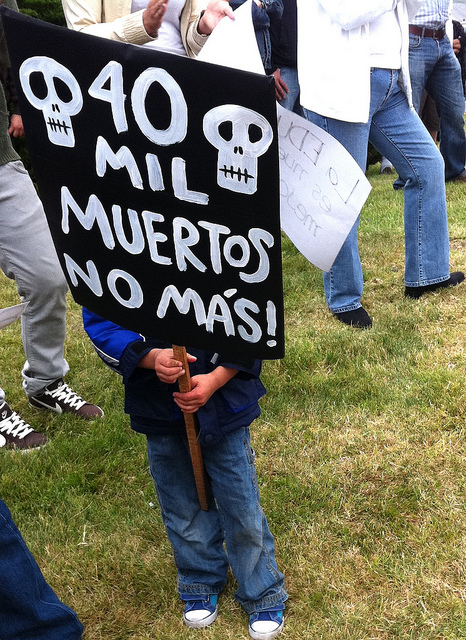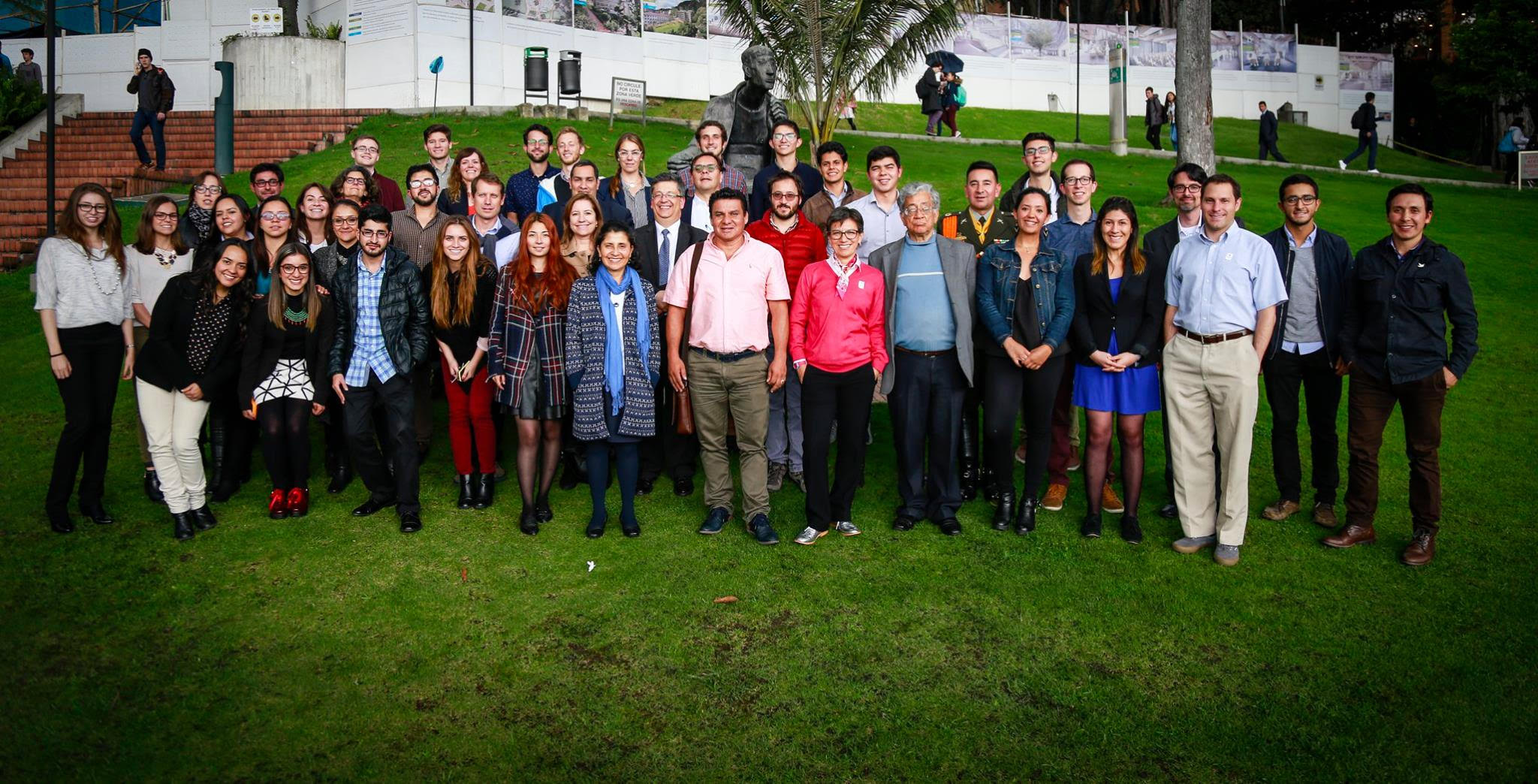By Oliver Kaplan for Denver Dialogues
Nonviolent action can be a useful tool for voicing citizen concerns and even pressuring dictators, but can it prevent massacres during war? New evidence suggests “Yes”—that wartime massacres may indeed be deterrable through community organizing. Such organization may be effective at halting not only lower levels of violence but also some larger-scale atrocities as well.
A look at data on massacres provides a clue about the prevention prospects of community collective action. In Colombia, various organizations have compiled data on massacres, including Colombia’s National Center for Historical Memory (CNHM), which published data as part of its comprehensive Basta Ya report on the conflict. The CNHM defines massacres arbitrarily as when four or more individuals are killed in a single event, though others have used higher thresholds. The data contain 18,328 total events of killings that occurred from 1980-2012, of which 1,982, or 11%, are “massacres” with more than four victims. Of the massacres, 59% (1,166) are attributed to paramilitaries, 17% (343) to guerrillas, and 9% (170) to state forces.
The distribution of massacres and other killings reveals a pattern. Most events have very few victims, while very few events involve many victims. Figure 1 rank-orders the incidents by the number of victims, indicating that 99% of events had less than 10 victims. There is also an inflection point at the far right of the graph somewhere between 10-15 victims, suggesting a rare and qualitatively different form of violence (even with massacres likely over-reported relative to smaller forms of violence). The few events with many victims could be explained by the armed actors rarely having the need, opportunity, or capability to carry out such violence. Further, some large-scale massacres may be relatively inadvertent, such as when artillery fire hit civilians sheltering in a church in the town of Bojayá in 2002. However, the pattern is also consistent with a lesser willingness to commit harm when many people are together.
Figure 1
Killings and Massacres in Colombia, 1980-2012 (ranked low to high)
Source: CNMH database
To understand why this might be the case—why crowds may sway combatants—I interviewed ex-combatants and collected additional reported accounts. As a former FARC rebel (Revolutionary Armed Forces of Colombia) mid-commander explained his and his unit’s mindset:
“If one sees a strong social structure, it can change the way a group thinks. To kill one or two [resisting] people is one thing, but to kill a whole [resisting] community is too far” (Bogotá, 2009).
The quantity of civilians activates different moral and reputational concerns, with larger numbers favoring restraint. Similar statements are found among other armed actors as well, such as some paramilitaries.
Some civilians in organized communities intuitively figured out this logic and then preyed on armed groups’ reluctances. In one such instance in 1989, a group of campesinos (peasants) from the Peasant Workers Association of the Carare River in the department of Santander went to negotiate a local peace accord with the FARC guerrillas (and then other actors). They sought to dialogue with Braulio Herrera, a representative from the FARC-associated Patriotic Union party. As one of the community leaders recounted, they adapted their approach to limit the risk of a massacre:
“We left Cimitarra at around 5 a.m., but the Association decided to bring 30 people instead of only the Executive Board. Braulio asked that it only be the Executive Board, but we thought something very logical: that with 10 they could shoot us with no problem, but at 30 it would become a massacre, and therefore a different question. So we sent word to leaders from all parts, and we were 30. Braulio didn’t expect that large quantity of people.” [1]
In this case, the peasants calculated correctly. They safely held a successful dialogue and won compliance with the local peace accords. They were safe perhaps in part because their numbers ramped up the costs of killing.
The account is surprisingly consistent with the breakpoint in the data, where the presence of somewhere between 10 and 20 civilians seems to equate with a substantive difference in armed actor behavior. This may be because mass violence can become a focal point that attracts attention, as people in the community and neighboring areas talk about it more, the media pick up the story, etc. Killing organized resisters would be reputationally even worse when civilians approach them nonviolently and for dialogue. More broadly, I find that higher levels of community organization in the form of a particular type of village councils in Colombia is associated with both fewer acts of selective (“political”) violence as well as fewer massacres. The councils both unite residents and can facilitate particular nonviolent protection strategies.
Although some massacres appear to be deterrable by strategic organizing and nonviolent action, the prospects for prevention are clearly dimmer in other cases. Under some conditions, large-scale collective actions may be seen as threatening to combatants and requiring some form of retaliation. There are also tragic cases, such as Srebrenica in Bosnia and others, where massacres are an intentional strategy of war, terrorism, genocide, or ethnic cleansing. The significance and harm of small-scale killings should also not be dismissed. Still, the encouraging approaches documented here beckon additional study to better understand when civilians can stop mass violence.
____________
[1] p.28, Sanz de Santamaría, A. 1989. Recopilación de Testimonios ATCC. Bogotá: Universidad de Los Andes. Translated by the author.







